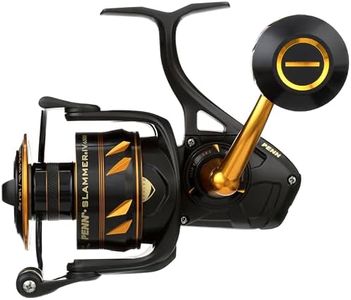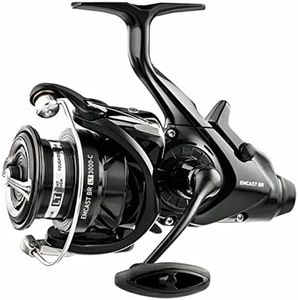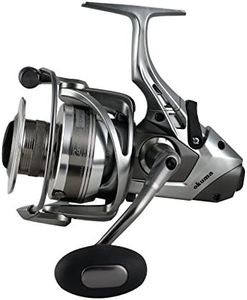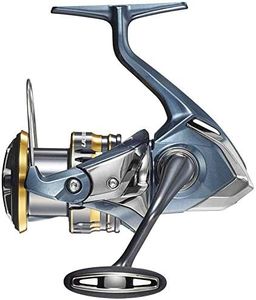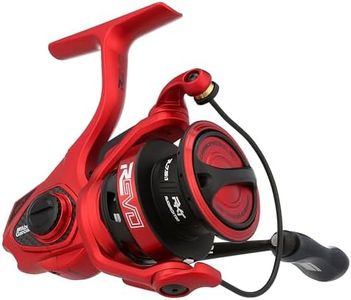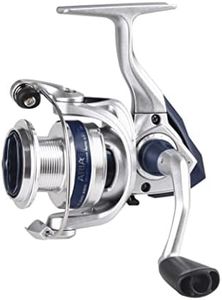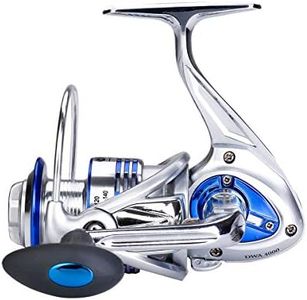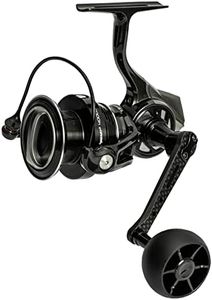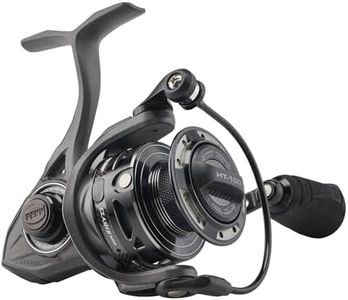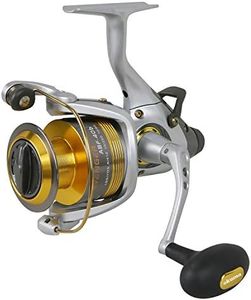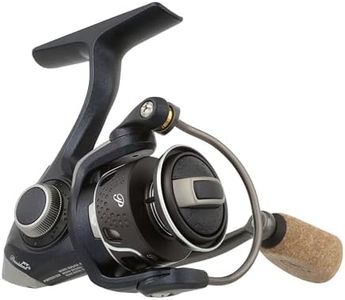We Use CookiesWe use cookies to enhance the security, performance,
functionality and for analytical and promotional activities. By continuing to browse this site you
are agreeing to our privacy policy
10 Best Salmon Spinning Reels
From leading brands and best sellers available on the web.By clicking on a link to a third party's website, log data is shared with that third party.
Buying Guide for the Best Salmon Spinning Reels
Choosing a salmon spinning reel is all about matching the reel's strength, smoothness, and durability to both the size of your target fish and the conditions in which you'll be fishing. The right reel makes your experience both more enjoyable and successful—helping you cast smoothly, fight large fish with confidence, and withstand the challenging environments salmon anglers often face. Take time to think about where and how you'll fish, and let that guide your decisions on key features.Reel SizeReel size refers to the physical dimensions and line capacity of the spinning reel, which affects how much fishing line it can hold and how heavy a line it can handle. This is important because salmon tend to be large, strong fish that require reels capable of holding heavier, longer lines. Generally, reels are marked by a number (like 3000, 4000, or 5000), with higher numbers indicating larger sizes and greater capacities. For smaller salmon in rivers, a 3000–4000 size is usually enough, while larger salmon or coastal fishing may call for a 4000–6000 size. Your target salmon species and fishing location (river vs. ocean) should guide your choice—if you expect hard-fighting fish or need to cast farther, lean toward a larger size.
Gear RatioGear ratio tells you how many times the bail rotates around the spool with each turn of the handle, which affects how quickly you can retrieve your line. This is crucial for salmon fishing because it impacts how you work your lures and manage a fighting fish. Lower gear ratios (around 4.5:1 to 5.3:1) are slower but provide more cranking power, great for battling bigger salmon or using heavier lures. Higher gear ratios (above 5.5:1) retrieve line faster and suit situations where quick lure presentation or rapid fish retrieval is needed. Think about your fishing style—if you fish in fast currents or expect to use large lures, a lower ratio is usually best; for active casting and retrieving, a higher ratio makes more sense.
Drag SystemThe drag system controls the amount of resistance a fish feels when it pulls on your line, which helps tire out salmon while preventing your line from snapping. A strong, smooth drag is vital because salmon are known for their powerful runs. Look at both the maximum drag rating and how smoothly the system operates—a jerky or inconsistent drag can cause lost fish. Lighter setups for small salmon might only need 10-15 pounds of drag, but larger salmon or challenging conditions call for 20 pounds or more. Consider the size and strength of the salmon you'll target, and make sure the drag system is smooth and easy to adjust.
Material and Build QualityThe material and build quality determine how well the reel will stand up to abuse, saltwater, and heavy fish. Salmon fishing often exposes reels to rough conditions and hard battles, so strong, corrosion-resistant materials like aluminum or graphite are preferred. Lighter reels are easier to manage for long periods, while heavier, more robust ones offer greater durability. Think about how rough your environment will be—fishing in saltwater or rocky rivers means you'll want a tougher, more corrosion-resistant reel.
Line CapacityLine capacity refers to how much fishing line the spool can hold, usually measured in yards or meters and matched to a specific line strength. This matters because salmon can make long, powerful runs, and having enough line prevents you from losing a fish that peels off yards of line in a hurry. Reels designed for salmon should have enough capacity to handle both the expected fish size and the type of water (open ocean or big rivers need more line, small rivers need less). Match your line capacity to your fishing situation—deeper waters or bigger fish mean you'll want a reel that holds more line.
Ball BearingsBall bearings help everything in the reel move smoothly and reduce friction, resulting in a smoother retrieve and less maintenance. More bearings generally mean smoother operation, but quality matters more than quantity. For salmon spinning reels, 5 to 8 good quality bearings are usually enough to ensure reliability and smoothness. If you plan to fish often, especially in saltwater, look for reels with sealed or corrosion-resistant bearings for added longevity.
